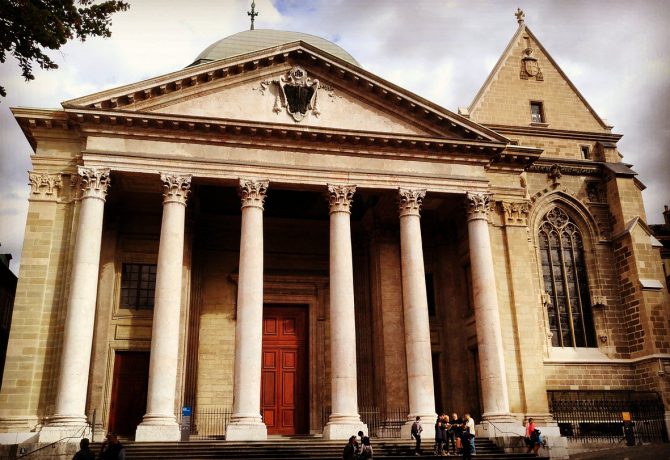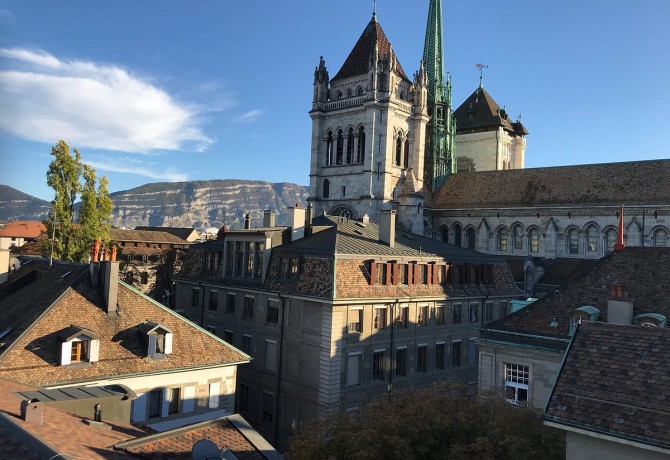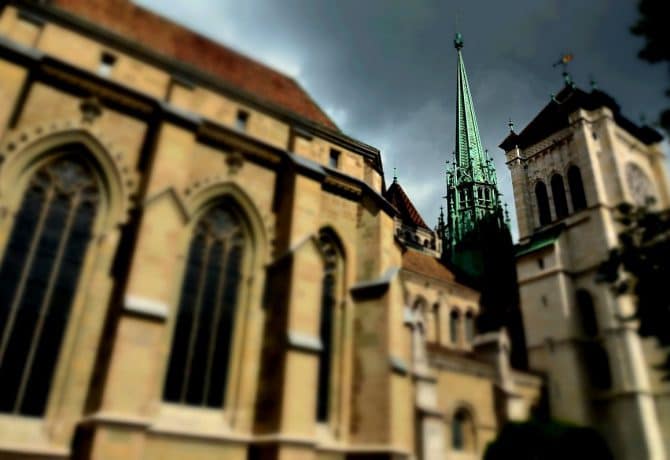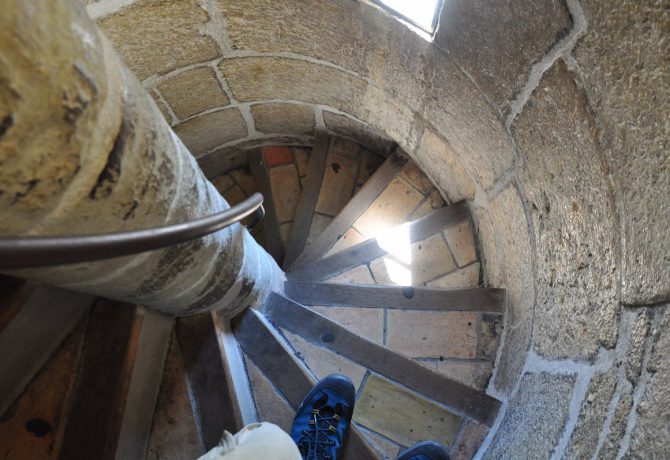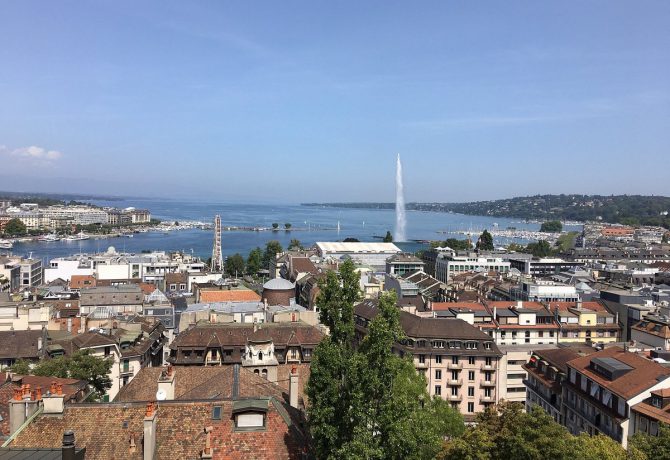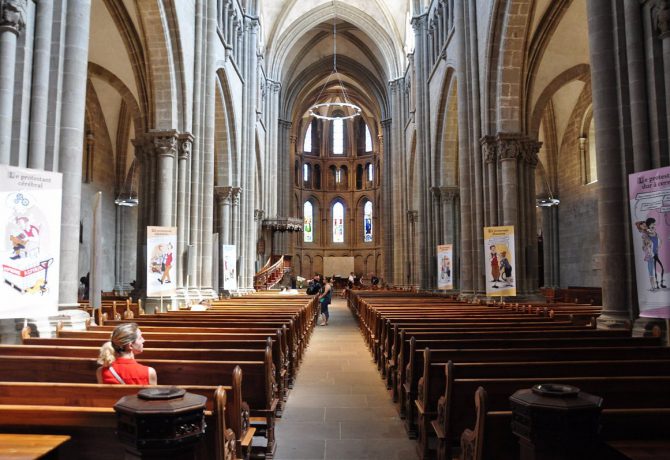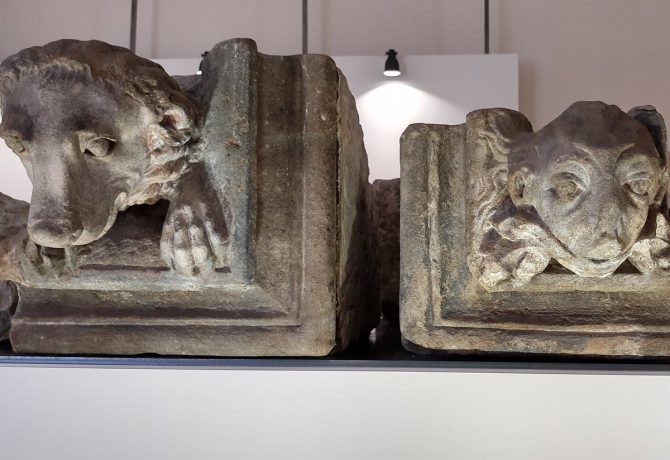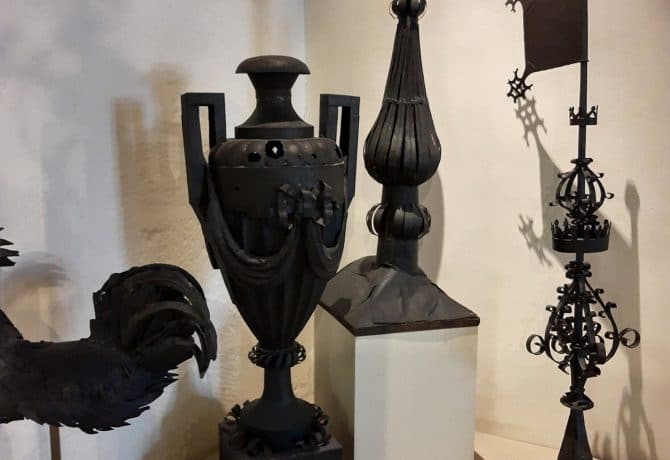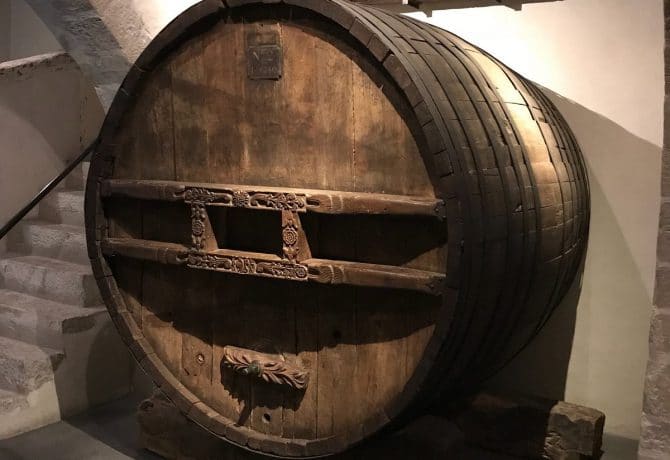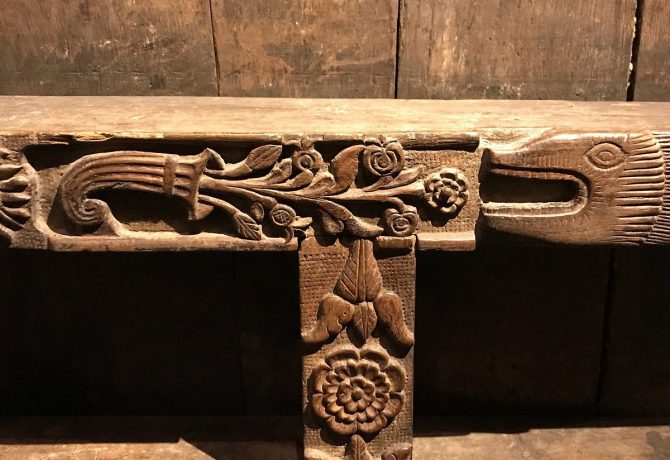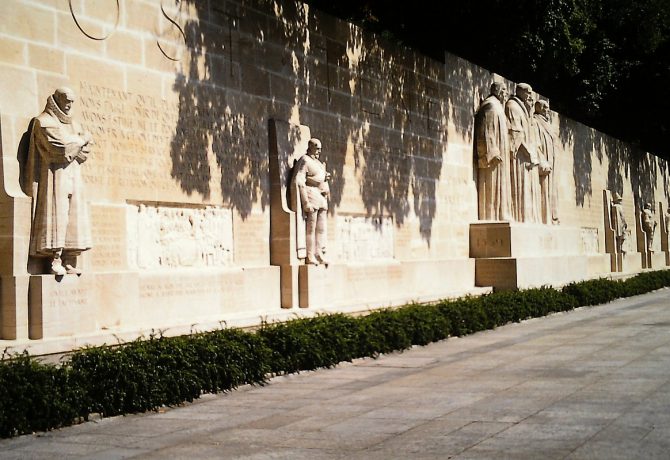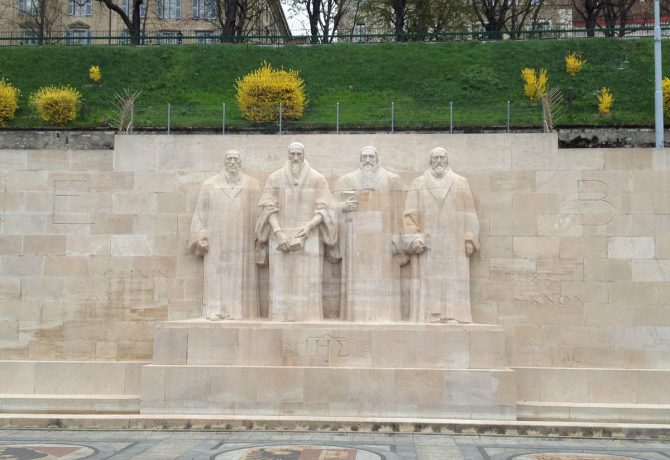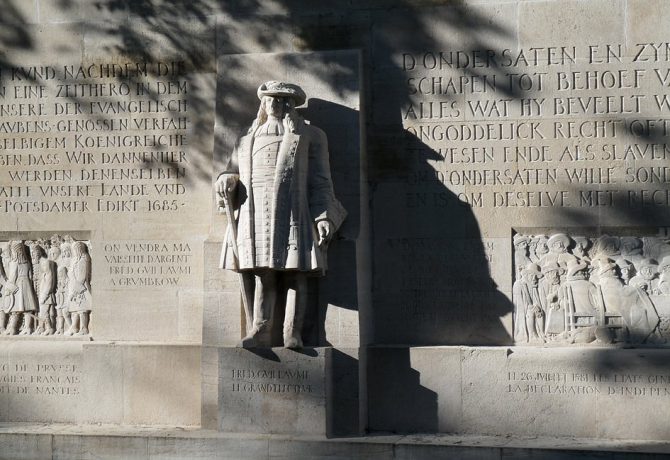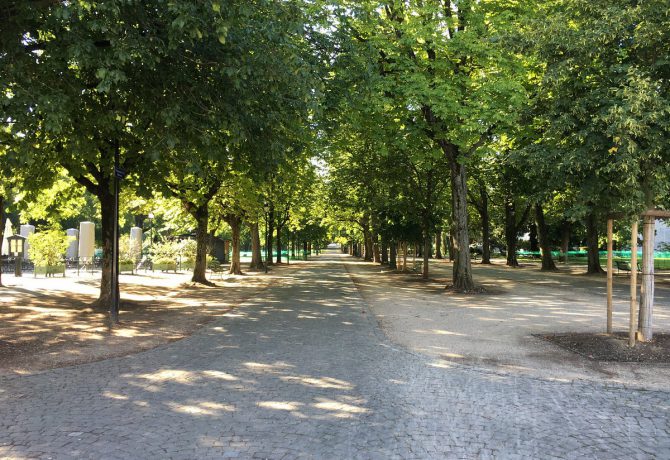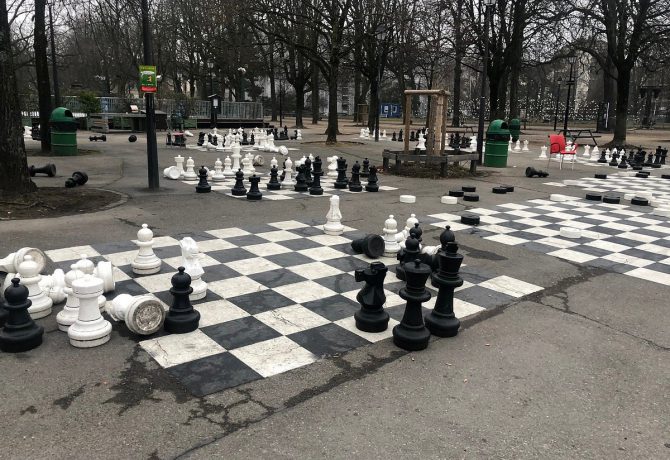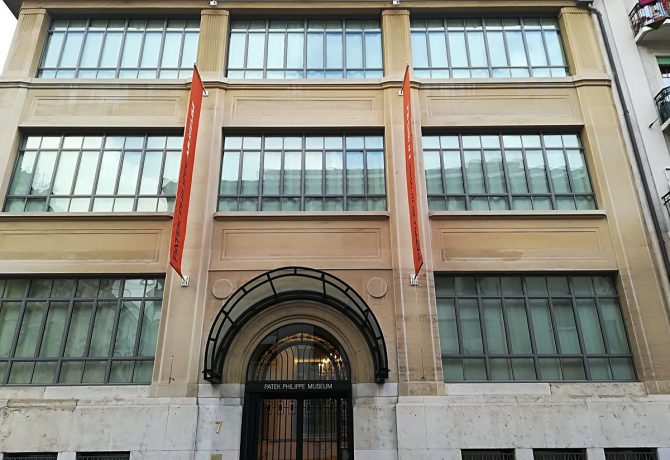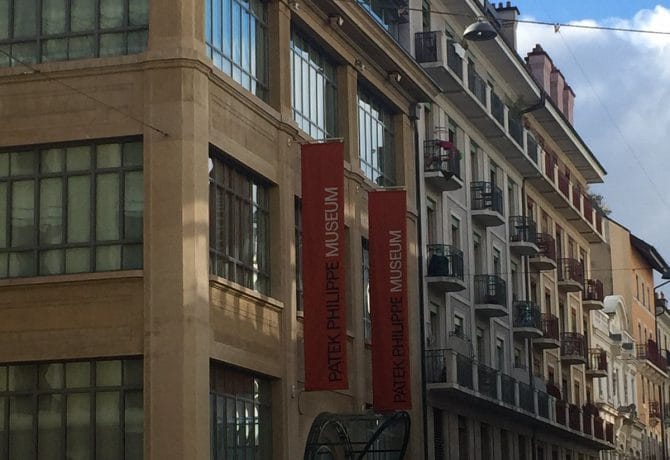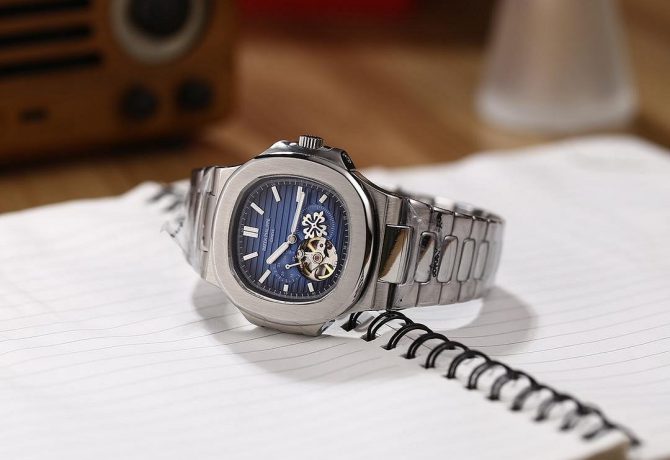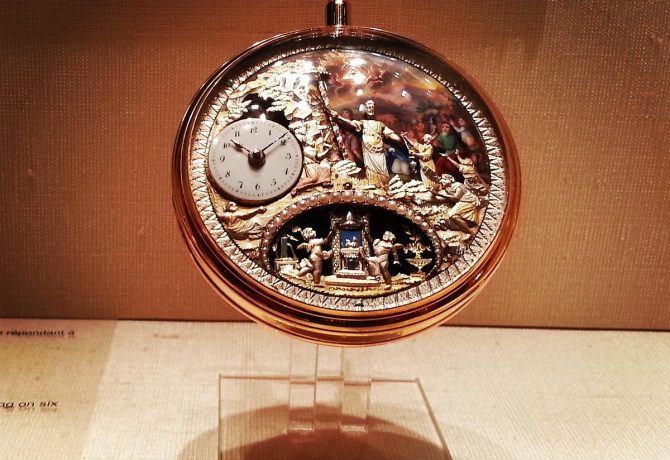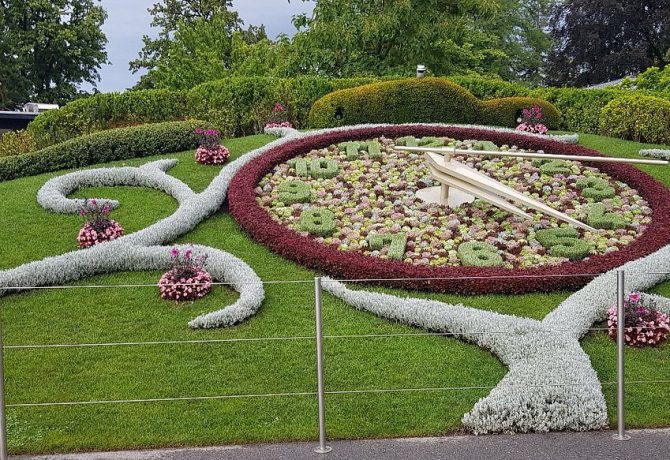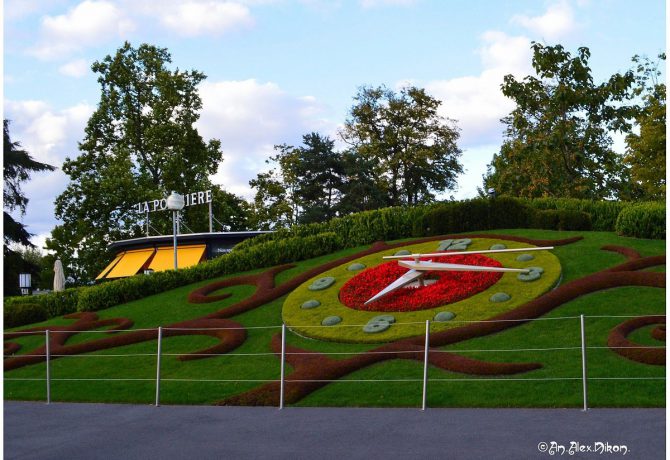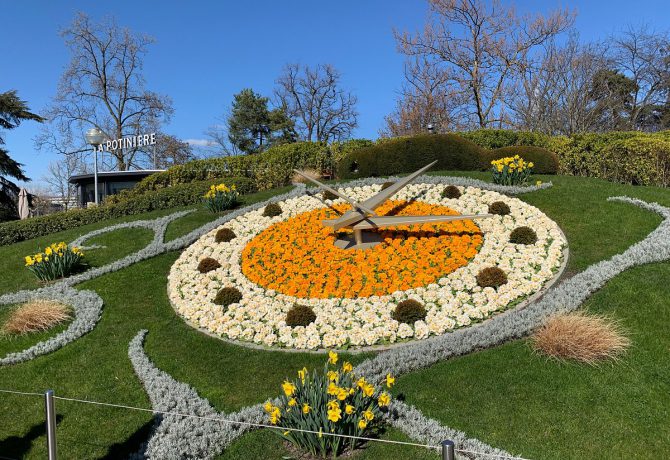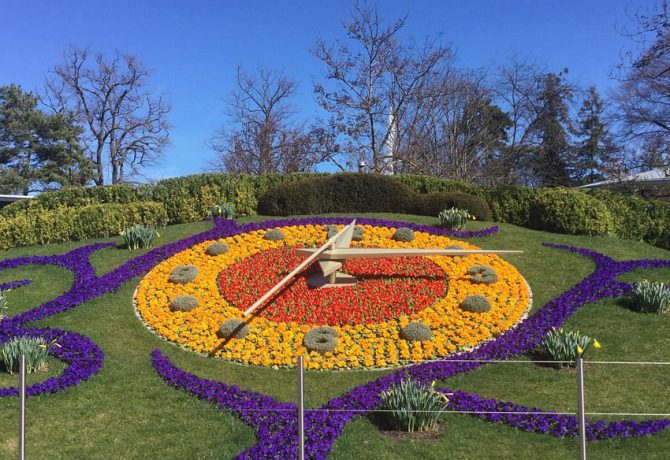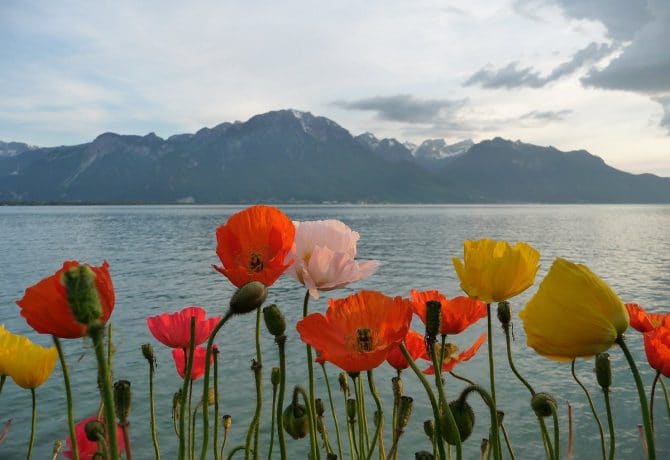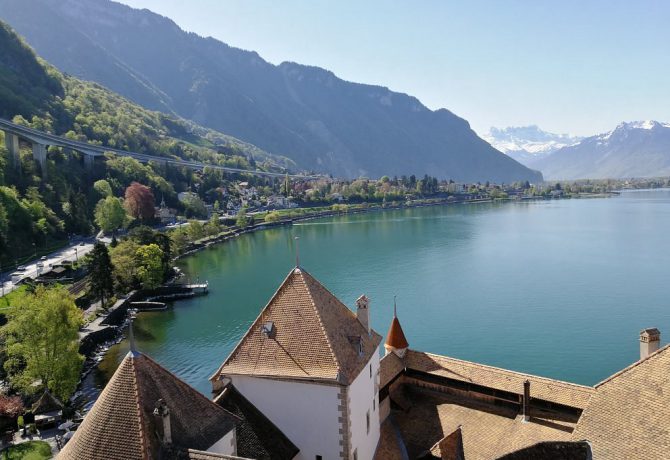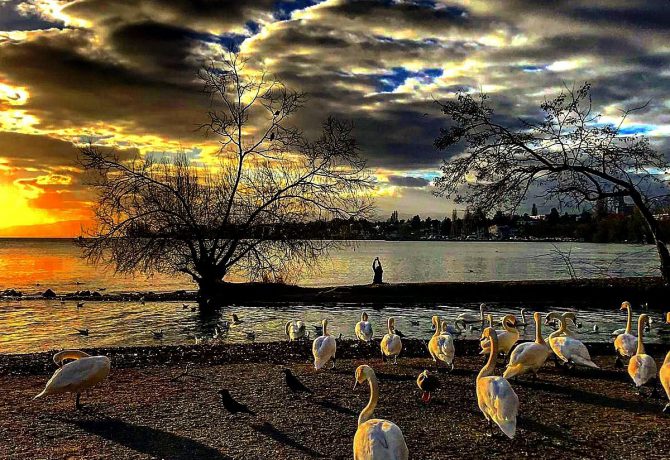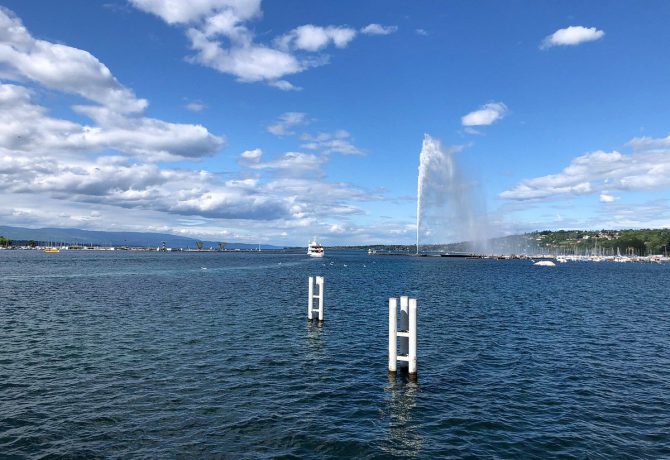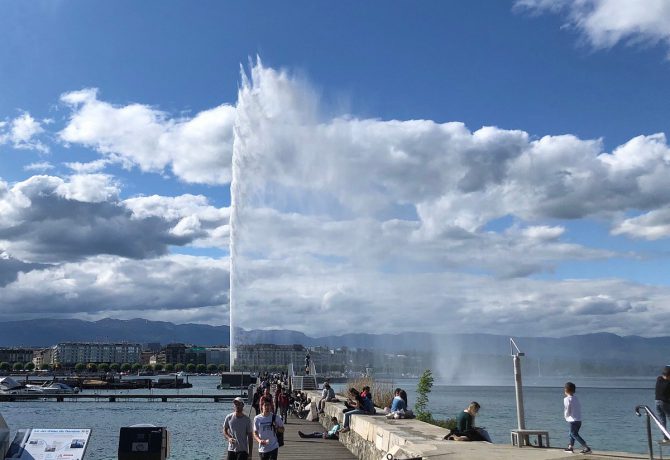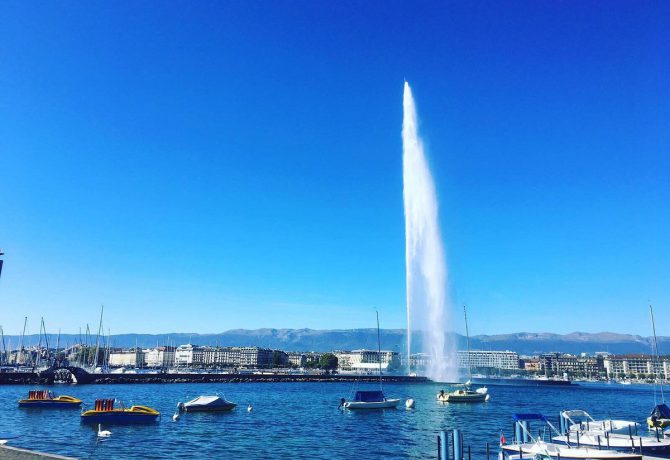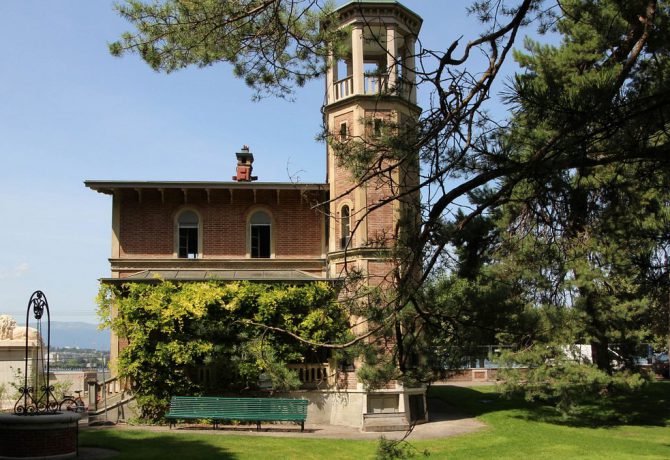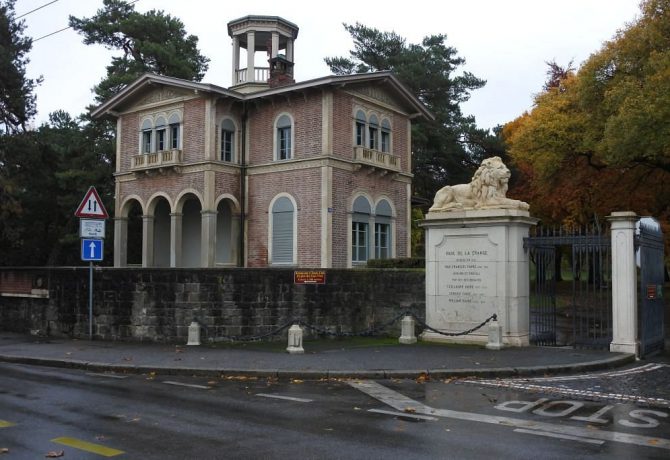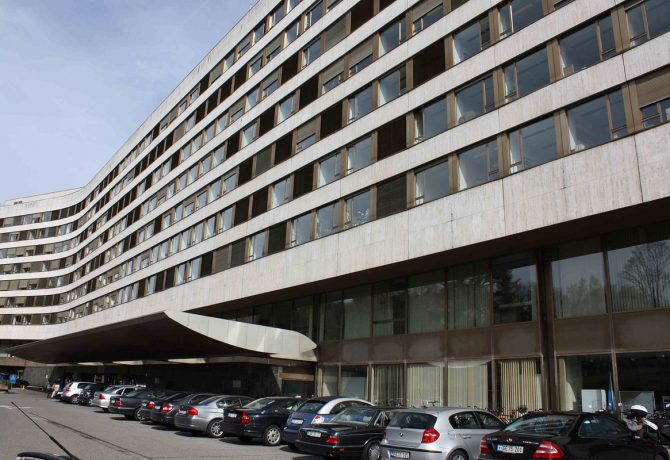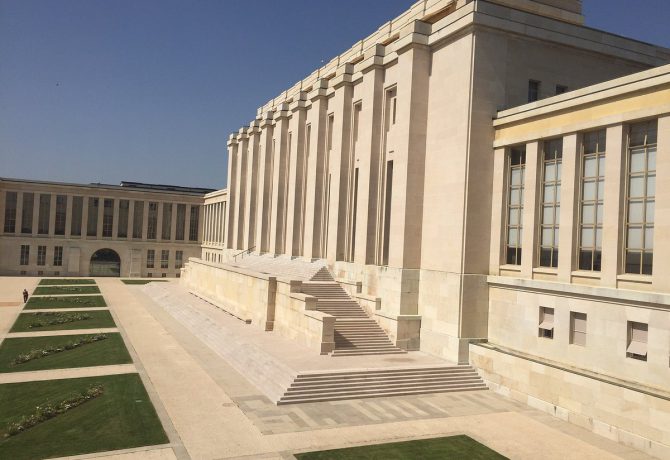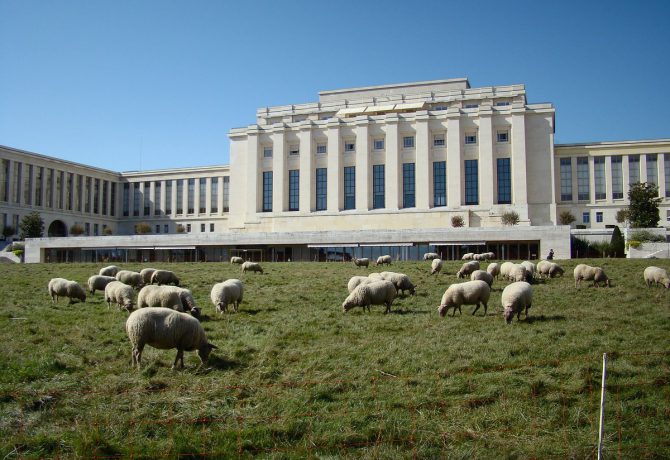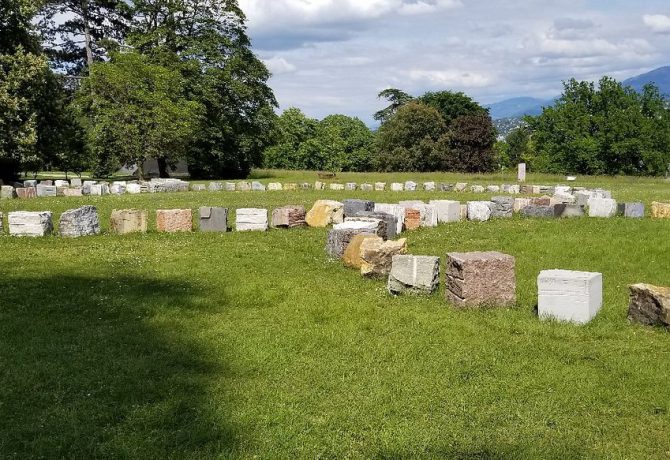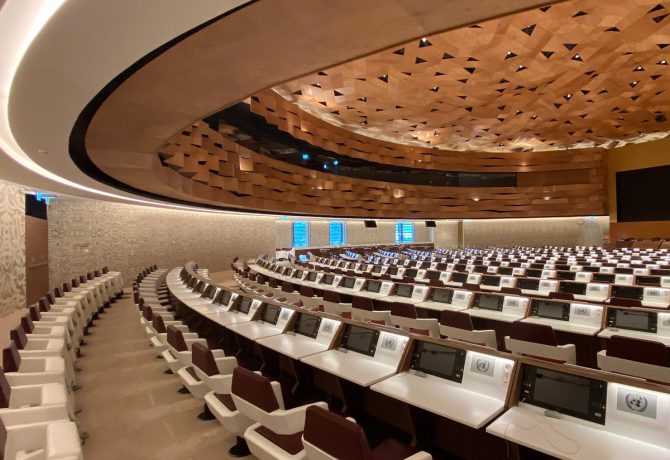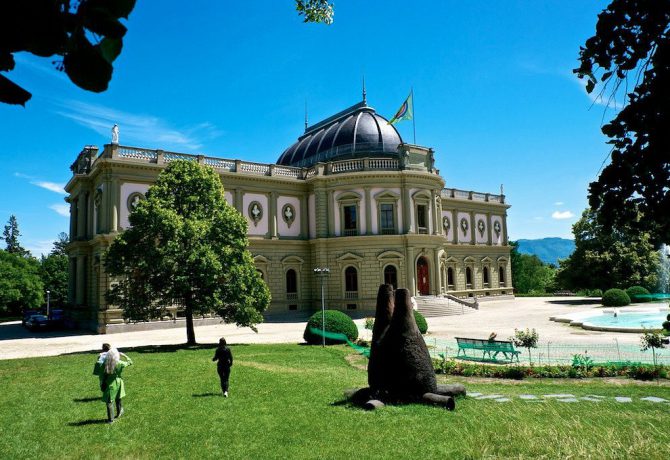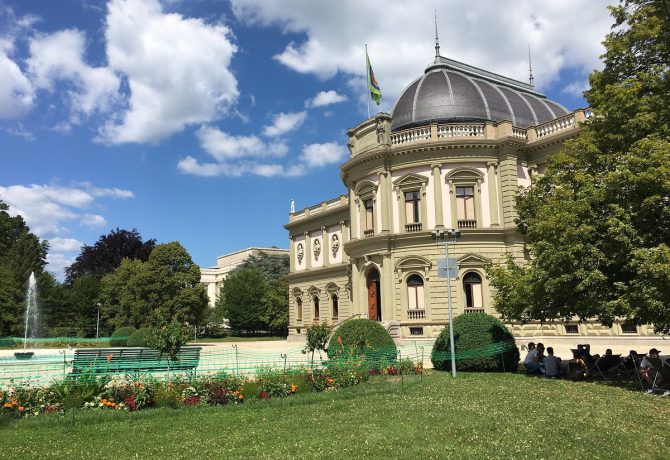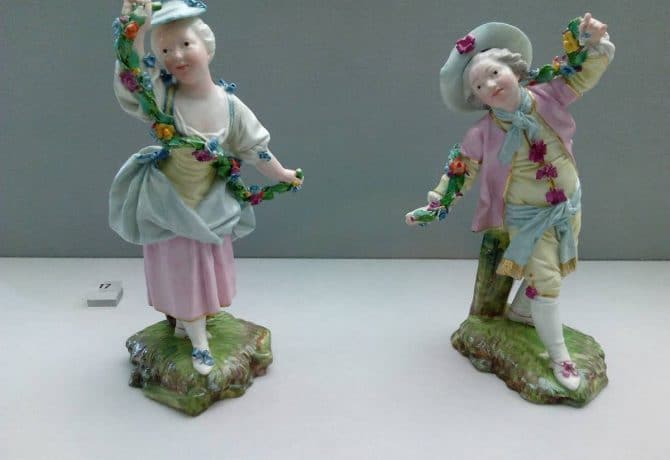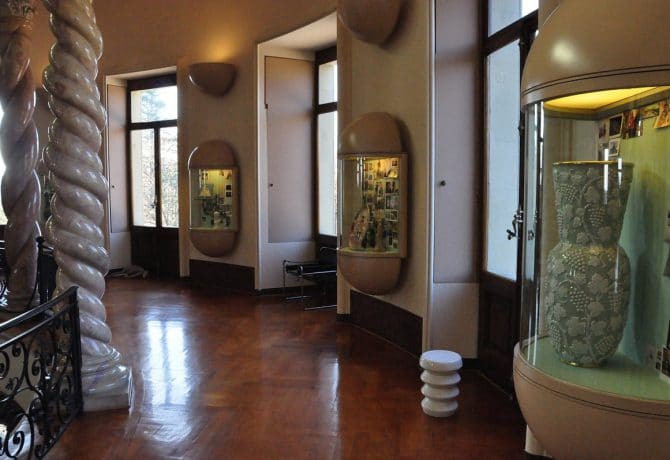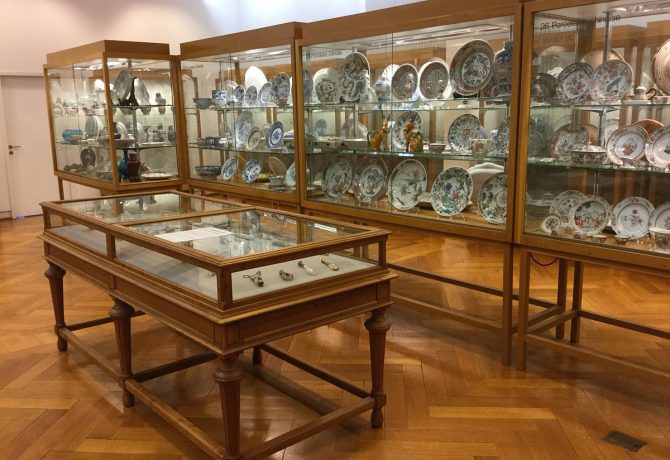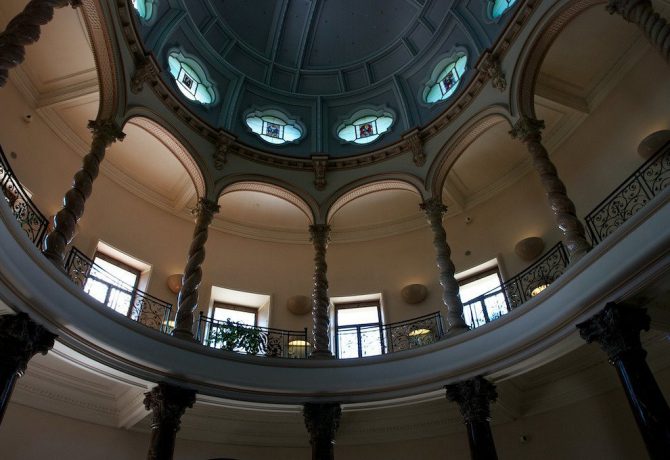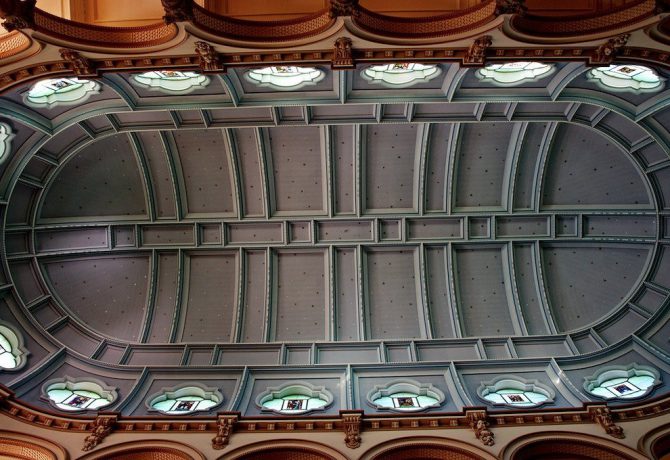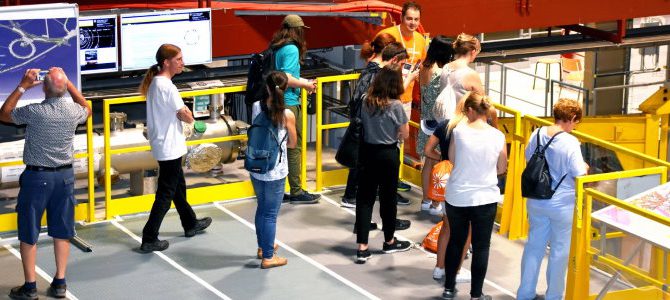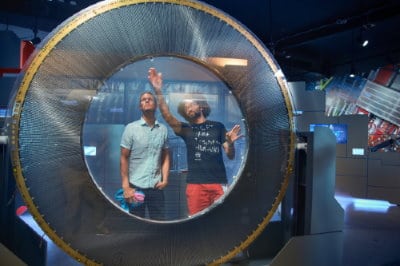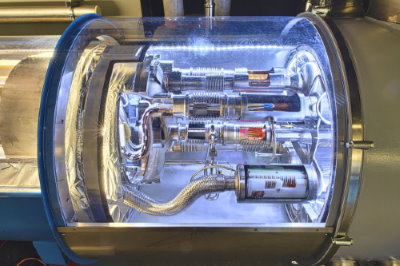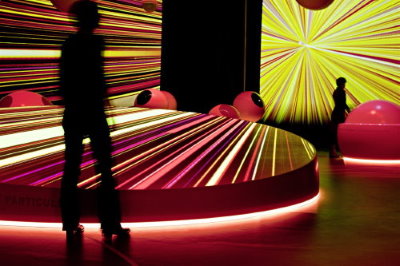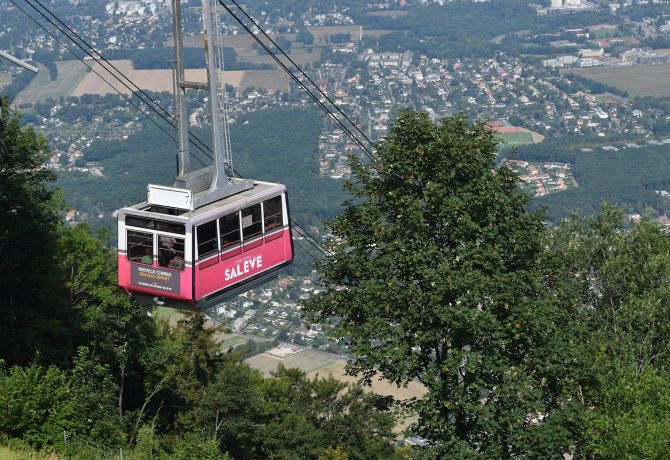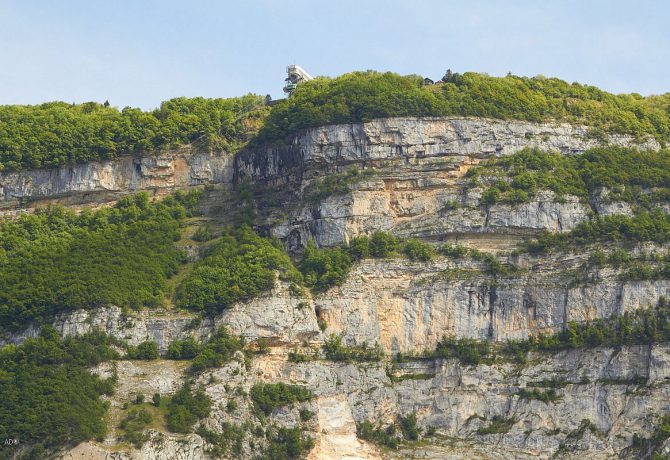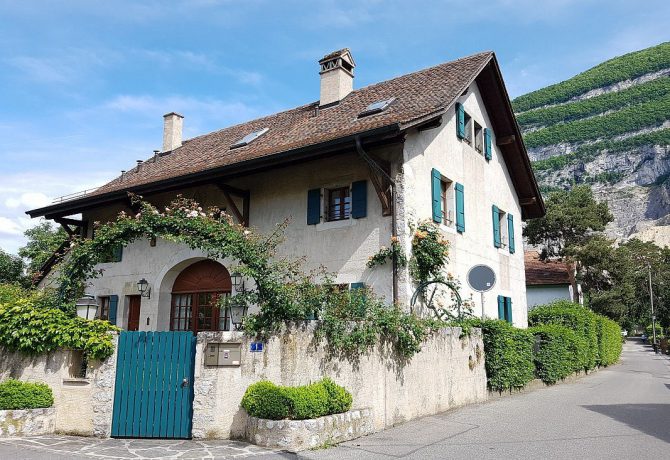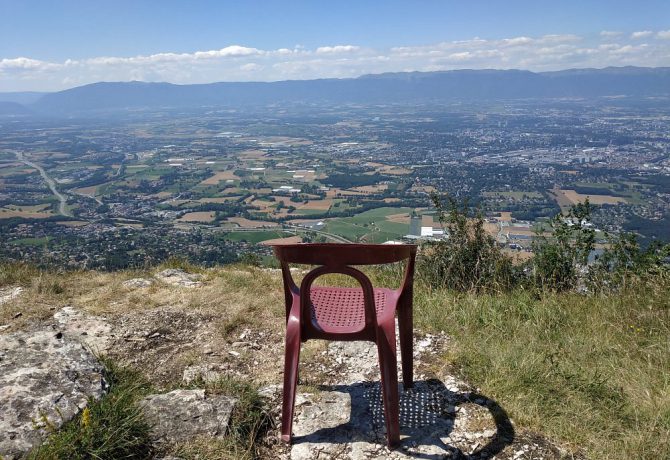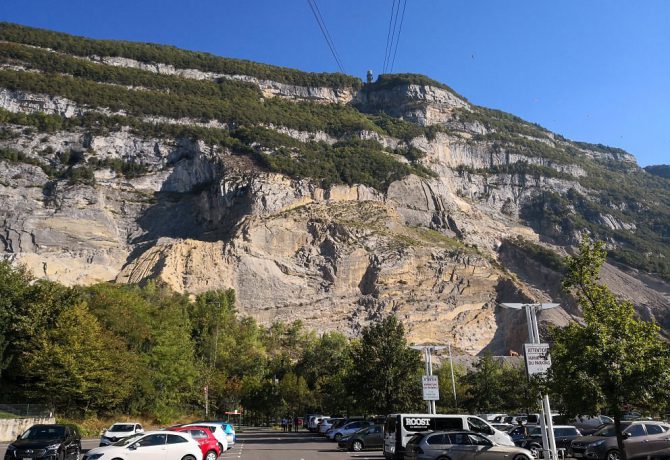Geneva is Switzerland’s second largest city and one of the richest in the world. Picturesquely located on the shores of Lake Geneva at the foot of the Alps, it surprises tourists with its beauty, many interesting places and the friendliness of people.
What is worth seeing and visiting in Geneva? What attractions not to be missed?
- 1 St. Peter’s Basilica in Geneva (Saint-Pierre Cathedral) and the Maccavean Chapel
- 2 The oldest house in Geneva
- 3 Promenade and Bastion Park
- 4 Patek Philippe Museum
- 5 Flower clock in Geneva
- 6 Lake Geneva
- 7 Fountain Jet d’Eau
- 8 Park in Geneva
- 9 Palais des Nations
- 10 Geneva Museum
- 11 CERN
- 12 Mount Salev
- 13 Attractions Geneva on map
St. Peter’s Basilica in Geneva (Saint-Pierre Cathedral) and the Maccavean Chapel
St. Peter’s Basilica is an impressive building standing in the center of the Old Town. The building is more than 850 years old, and in it you can see elements of Gothic, Neoclassical and Romanesque styles. This former Roman Catholic cathedral was the center of the Reformation and the transformation of Geneva. This is where Jan Calvin preached in 1536–1564. To this day, at the foot of the pulpit, you can see the chair on which he sat during the service.
The interior of the temple is austere and ascetic, with the exception of the last chapel on the left, the Chapel of Maccabees. Beautiful colorful stained glass windows, a blue ceiling full of angels and antique organs are just a few elements that make the chapel fascinate visitors. However, this is not the end of the tour. For 5 francs it is worth climbing the tower to admire the best view of Geneva. From it you can see the panorama of the city, its roofs, the lake and the surrounding mountains.
The oldest house in Geneva
A few meters from the cathedral is the oldest house in Geneva. The history of the house, also called travel House, dates back to the 12th century. The Maison family built a mansion, which unfortunately burned down in a fire in 1334. The destroyed building was rebuilt into the shape of a city palace by the Tavel family.
The free Geneva History Museum has been operating inside since 1986. On six floors you can learn not only the history of the city, but also the life of its inhabitants from the Middle Ages to the nineteenth century. An interesting exhibit is a huge three-dimensional map of Geneva, which depicts the city in 1850, when defensive walls still existed.
Promenade and Bastion Park
In the old town of Geneva there are many interesting and romantic places. This category includes a small park with a promenade. It was founded in the early 16th century and is the oldest park in the city. It owes its name to a hill that was once planted with vines. On the embankment there is a bench 120 meters long, built in 1767, which is the longest wooden bench in the world.
The tradition, cultivated since 1818, is also interesting. The promenade is planted with chestnut trees, including one of them, which is called the “official chestnut of the republic”. It is located under the windows of the Cantonese government and has been followed for over 200 years. As soon as the first leaf appears, it announces the onset of spring, and a festival of leaves takes place on the embankment.
It offers a beautiful view of the Bastion Park. The reason why it is worth seeing these amazing places is the monumental 100-meter Wall of the Reformation. The monument was completed in 1917, and its central part is occupied by four statues of representatives of the Protestant Reformation: Wilhelm Farrell, Jan Calvin, Theodore de Bez and John Knox.
Patek Philippe Museum
Geneva is sometimes called the city of clocks. It was here that the Swiss watch industry was born, and 72 companies have their headquarters. In the Patek Philippe Museum you can see more than 2000 unique exhibits and learn about the history of the manufacturer of one of the most expensive watches in the world.
The founders of the company were two Polish emigrants: Antoni Patek and Franciszek Čapek, the official date of creation is May 1, 1839. In 1844, a collaboration began with the French engineer Adrian Philippe, who joined the company seven years later. High quality products and unique technologies have made the company a huge success. As early as the nineteenth century, his clients were Queen Victoria and Pope Pius IX.
On the fourth floor of the museum you can see a rich collection of watches of Swiss and European manufacturers, in which the oldest exhibits date back to the beginning of the 16th century. It was here that the earliest and most elaborate clock ever made.
Flower clock in Geneva
A diameter of 5 meters and 6500 fresh flowers make up the world’s largest flower clock. Depending on the season and flowering period of plants, its shield changes its appearance. This is a free attraction that the tourist will find on the outskirts of a popular park right on Lake Geneva.
Lake Geneva
Geneva is located on the southwestern edge of Lake Geneva, where the Rhône River flows. The historical name of Lake Geneva (Lac de Genve) is Lake Geneva (Lac Lman). If it were not for the fact that some water bodies belong to France, they can be considered the largest lakes in Switzerland.
Walking along the promenade along its shore, you can see the reflections of buildings and mountains in its crystal clear water and admire the beautiful yachts standing at the pier. However, it is worth looking at the city from a different angle and going on a cruise on the lake. There are several possibilities, from an hour-long cruise along the coast to cruises to Lausanne, Nyon or a cruise on the Rhône. Each of them will give an unforgettable experience and allow you to relax before sightseeing.
Fountain Jet d’Eau
The Jet d’Eau fountain is a symbol of the city and the tallest fountain in Europe. The first fountain was installed in 1886 and served as a safety valve for the hydraulic power system. In 1891, it was moved to its present location to perform only a decorative function.
Jet d’Eau means a flow of water, and every second it throws five hundred liters of water to a height of 140 meters. For this purpose, two pumps with a capacity of 500 kW are used. The speed of the ejected water is 200 kilometers per hour, and it comes out through a nozzle with a diameter of 10 centimeters.
Park in Geneva
Continuing a walk along the lake, in a few minutes a person will reach the largest park in the city – Parc de la Grange. This place will especially appeal to people who love flowers or are looking for romantic corners. The rose garden, historic buildings, ruins of an ancient villa make it an ideal place for a picnic or even a barbecue. An additional plus is that even in the summer there are few people in it.
There are many public parks in the city. Very often these are places where you can listen to music or watch performances of artists. You can also visit the city botanical garden. It is more than 100 years old, and unique species of flowers and other plants from around the world are collected here.
Palais des Nations
Geneva is considered the most political city in Europe. It has about 200,000 inhabitants, of which 61% are immigrants. Very often they are employees of one of the 22 international organizations or more than 250 non-governmental organizations headquartered in that city.
One such organization is the United Nations, the European headquarters of which is located in Geneva. It is located in the Palais des Nations, built in 1929-1936, formerly part of the League of Nations. Visiting the object is possible only with a guide. The duration of the trip and its course depend on the meetings that take place inside.
Even if a person does not want to visit the palace, it is worth going to the Square of Nations, from where you can see the building of the organization against the background of masts with the flags of the countries that belong to it. On the same square was installed a 12-meter Broken Chair, one of the most interesting Geneva monuments. It symbolizes the protest against the use of anti-personnel mines in ongoing wars.
The city is often called the “Capital of the World” because it is the seat of the United Nations and the headquarters of the International Red Cross and Red Crescent Movement. The initiator of the creation of the Red Cross was the Swiss businessman and philanthropist Henri Dunant. The organization was founded in 1863 and since then has been directing its activities from Geneva.
Geneva Museum
The Ariana Museum is located near the Palais des Nations. The building, which combines neoclassical and neo-baroque styles, hides 20,000 ceramic and glass objects. The exhibits come from Europe, the East and the Far East, and thanks to them the traveler learns about the 12th centuries of the history of ceramics and the 7th centuries of glass production.
CERN
CERN is the most important research and scientific center in the suburbs of Geneva on the border between Switzerland and France. Among the many inventions that have arisen here, medical items can be mentioned.
Mount Salev
A trip to Mount Salev is one of those things not to be missed. Reaching the top, a person will be able to see an amazing view of the urban area of Geneva, the lake and even Mont Blanc in good visibility. The top of the mountain is a plateau followed by pleasant trails. In addition to hiking, you can go mountain biking, rock climbing or paragliding.

